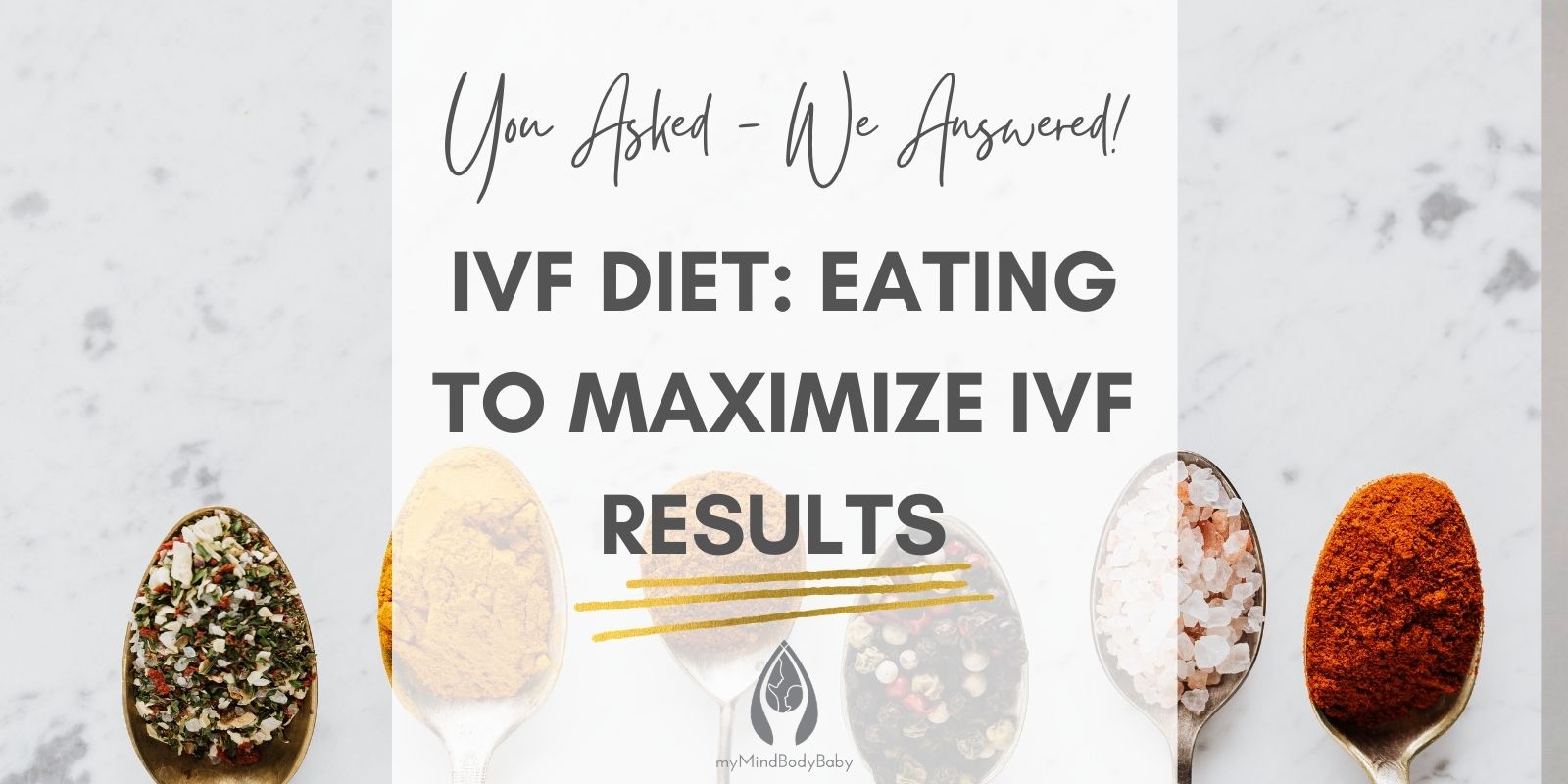“IVF Diet: Eating to Maximize IVF Results” | myMindBodyBaby
IVF is a big decision – not only is it $$, but the emotional toll, physical and mental question marks, plus possible disruption to career are all big considerations when thinking about IVF.
The stakes are high and the decisions to make are aplenty…
- when is the best time to do this?
- to ICIS or not to?
- genetic test or no genetic testing?
- transfer 1 or 2?
And because there are so many decisions, we wanted to take one important thing off your decision-making plate.
How to eat for this high-stakes cycle is a hot topic, so let’s break it down!
Below you will learn how to make it easy to prep food for IVF, what to eat following your egg retrieval to support a speedy recovery, and what to eat after your embryo transfer to encourage implantation.
Let’s do this!
Read this before your IVF cycle
You have probably read or heard about low-carb or keto diets when doing fertility treatments. You might be wondering, “Is this for me?”. Well, let’s break it down.
In this study, a greater adherence to a Mediterranean-style diet while going through IVF was associated with a higher likelihood of achieving clinical pregnancy and live birth among non-obese women <35 years of age. And in this study, more embryos were obtained via IVF when the participant followed a Mediterranean diet.
So what exactly is a Mediterranean Diet?
It is characterized by:
- daily consumption of fruits, veggies, whole grains, and healthy plant-based fats
- weekly intake of poultry, fish, nuts, and beans
- moderate portions of dairy
- limited intake of red meat
Juustttt in case you missed it, carbohydrates are ok to eat, and in fact, they are a part of what supports an increased number of resulting embryos. Good news for carb lovers.
Examples of good carbs include:
- beets
- sweet potato and yams
- berries
- lentils
A good rule of thumb to follow: ½ your plate should be vegetables, ¼ protein, and the last ¼ some type of quality carbohydrate. Remember, you do not need to ditch carbs to conceive. It’s the quality of those carbs that count!
*If possible, I recommend starting a Mediterranean-style diet at least 1 month prior to your IVF cycle. If you can start 3 months (or more) before, this would be ideal.
If you would like some yummy IVF-specific recipes, here is 1 week FREE as my gift to you!
54]
Read this before your IVF retrieval
To ensure you get back on your feet quickly after retrieval, here are a few tips to consider:
Tip #1. Set yourself up for success. Prep some hearty meals that you can pull out of the fridge, quickly warm up and then return back to the couch to eat. If you want some help with ideas and recipes, we have an IVF retrieval plan recipe booklet that comes with our doctor-recommended IVF Nutrition and Fitness Program.
Tip #2. Reducing inflammation is key right about now – your body has been through a lot and it’s time for a little extra TLC. Bump up your healthy plant-based fats (avocado, olive oil, and raw nuts and seeds). Plus, the beauty of fats is they keep you feeling satiated for longer and help to balance hormones… and I’m sure yours are a little wonky right now from all the meds!
Tip #3. Next, flush! Flush out the medications and inflammation. Water is going to be your best friend right now. To add to this, you could consider green tea and coconut water for added electrolytes (make sure there isn’t any added sugar). Aim for a minimum of 2 liters of water and liquids per day.
Read this before your fresh or frozen IVF transfer:
In addition to sticking to the advice above, here are some additional tips to help support implantation.
The Mediterranean diet is still applicable here – lean proteins, veggies galore, quality carbs, and healthy plant-based fats. But as an added twist, I want you to think about adding warming foods into your diet for the next 7-14 days. This means foods that are warm in temperature – think soups and stews, and foods that have warming properties like cinnamon and ginger.
Why, you ask? In traditional Chinese medicine, warming a “cold” uterus is a treatment for improving fertility and pregnancy rates. So, paying attention to creating heat and warmth goes back to consuming those foods and drinks that can help to achieve this.
Don’t love cooked foods? You can still enjoy the cooler foods you love, like smoothies. Consider adding foods and spices like cinnamon, ginger, and stewed apples to your smoothie instead of cold fruits. Instead of a chilled salad, consider a grilled veggie salad topped with roasted pecans. I’m drooling already!
If you want more support during the infamous TWW and how to support implantation, this free handbook is perfect for you ==>
51]
Pro tip – Keeping your feet warm is also a good idea while trying to “warm” your uterus. Traditional Chinese medicine has long thought that cold feet are associated with a cold uterus since the meridians that start in your feet connect to the reproductive organs.
I hope these tips help lighten your mental and decision-making load during your cycle. If you want more, our full IVF System is perfect for you. It will guide you day-by-day on how to eat, exercise, and how to use IVF-specific positive visualizations to improve your mental health and pregnancy outcome!




